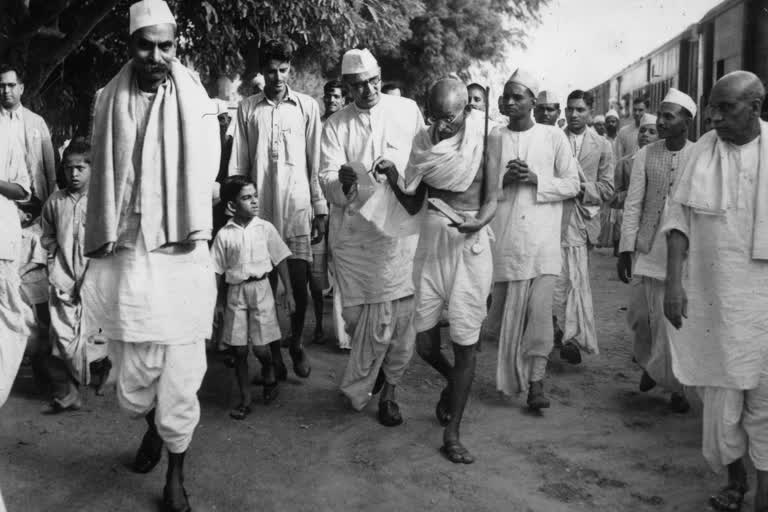Hyderabad:April of the year 1917. The land of Champaran. A novel experiment of truth and non-violence. The protagonist was a man called Mohandas Karamchand Gandhi. He had already done a similar experiment (Satyagraha) in South Africa. He was successful there. This experiment gave him a new identity in India. Probably, this was the reason why Rajkumar Shukla, a farmer from Champaran instead of asking the other contemporary leaders to visit Champaran and take account of the situation, narrated the ordeal to Gandhiji and invited him.
If we observe the political landscape of 1917 we realise that Gandhiji was not amongst the first line of leadership in Indian National Congress. Yet the faith that was vested in him by the farmer residing in the other part of the country is noteworthy.
Gandhiji has extensively written about Champaran in his autobiography. He has written that he encountered the ‘Goddess of Ahimsa’ in Champaran. In India, under the leadership of Mahatma Gandhi, Champaran was first to witness Satyagraha. In 1917 Champaran Satyagraha changed the course of Indian freedom struggle. After this, Gandhiji acquired the centre place in the national movement as well as in Congress.
When Gandhiji decided to go to Champaran at the behest of Rajkumar Shukla he had no idea that he would initiate a satyagraha there, or he would stay there for those many days; or he would give real form to his concept of education; or he would call Kastoorba Gandhi, Rajendra Prasad and other important leaders; or what started as fact-finding in Champaran would prove to be so essential for the near future, or the visit to Champaran would add a new chapter to history of Satyagraha.
Gandhiji spoke about the origin of the word satyagraha that before this name was coined a ‘matter’ was first created. Matter, meaning that after which ‘satyagraha’ became a prominent name in the world of knowledge. Even Gandhiji had not recognized its form at the time of its origin. Everyone recognized it in Gujarati as its English name ‘Passive resistance’.
In an assembly of Europeans in South Africa, Gandhiji realized that very narrow meaning of ‘passive resistance’ was being taken. It was considered to be the weapon of the weak. It may contain malice and in its final stages, it may take a violent turn. In such a scenario Gandhiji vehemently opposed it.
A new term is required to address every new or fundamental phenomenon. A word that can express that phenomenon in its true perspective, sometimes new phenomenon adds new meanings to old words. Then the old meaning is displaced and the new meaning becomes strongly associated with that word. The term ‘passive resistance’ was unable to completely express the struggle in South Africa lead by Gandhiji in its true sense. Hence, it became necessary for the Indians to plan a new term to redefine their struggle.
Gandhiji could not figure out an appropriate and exclusive word for it. Hence, he announced a competition for the readers of ‘Indian Opinion’ with a namesake reward. The prize was won by Maganlal Gandhi. He made a synthesis of the terms sat+agrah and sent the word Sadagrah as his entry. Gandhiji in order to enhance the meaning furthermore added a letter ‘y’ to coin the word ‘Satyagraha’. As a result, this struggle was by this name in Gujarati. In the due course of time, this word became a synonym for all non-violent movements across the world.
After the Satyagraha in South Africa, it became apparent that the basis of Mohandas Karamchand Gandhi’s thought and deeds were truth and non-violence. Ahimsa according to Gandhiji was the greatest challenge in Satyagraha. Hence, there were debates discussions and conversations on it. Many did not agree with establishing non-violence as the root of satyagraha…many still do not!
Even those with diametrically opposite views do not concur to the principle of ahimsa. Both right-wing and left-wing who on other issues are opposed to each other, both seem to agree to disagree on this issue. Even the great freedom fighter Lala Lajpat Rai was in fierce disagreement with the concept of nonviolence. Both Lala Lajpat Rai and Mahatma Gandhi’s conversation on Ahimsa is well discussed.
